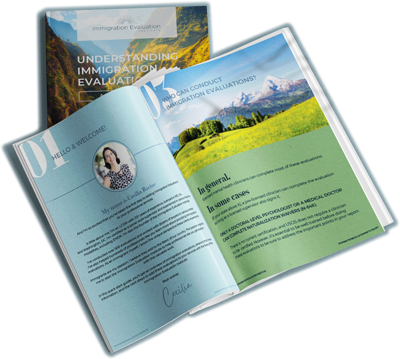What do you want to learn more about?
Breaking the Silence: Understanding Domestic Violence Awareness Month

Domestic Violence Awareness Month, observed annually in October, is a critical campaign highlighting a pervasive issue affecting millions of individuals and families in the USA.
I’ve touched on this important topic a couple of times across the blog, but it’s one that I think is important to keep coming back to – especially during this crucial month so we can continue to show our support and share our knowledge.
In writing this, I hope that we continue to come together as professionals and as a community to show solidarity with those affected by domestic violence.
The Importance of Domestic Violence Awareness Month
Domestic Violence Awareness Month originated in October 1987 and was initiated by the National Coalition Against Domestic Violence (NCADV). This dedicated month aims to raise awareness, educate communities, and provide support to survivors while promoting advocacy for the prevention and eradication of domestic violence.
This awareness campaign is crucial for several reasons, including:
- Education and Awareness: It educates the public about the dynamics of domestic violence, dispels myths, and promotes understanding.
- Resource Mobilization: It facilitates resource allocation towards addressing domestic violence, supporting survivors, and funding prevention programs.
- Empowerment and Solidarity: It encourages survivors to share their stories, fostering a sense of empowerment and solidarity within the community.
It also encourages those in professions who work with those most impacted by domestic violence to consider how we’re showing up in this space. It invites us to ask essential questions about our practice and skills in this area:
- How can I improve my knowledge of domestic violence to better support victims?
- What bias or gaps in knowledge do I have that need to be addressed?
- How am I taking on the trauma of my clients experiencing domestic violence, and how do I look after myself properly in this space?
The State of Domestic Violence in the USA
Domestic violence is a pervasive and alarming issue affecting many individuals and families in the USA.
According to the National Domestic Violence Hotline, on average, nearly 20 people per minute are physically abused by an intimate partner in the United States. That equates to more than 10 million men and women annually.
The consequences of domestic violence extend beyond immediate physical harm and include emotional and psychological trauma, economic instability, and a cycle of violence that affects generations.
It’s imperative to address this issue openly and work towards creating safer spaces for all – even if that’s something small.
The Impact on Immigrants
Immigrants facing unique challenges, such as language barriers, immigration status, and limited support networks, are especially vulnerable to domestic violence. Fear of deportation, unfamiliarity with the legal system, and cultural stigmas often prevent them from seeking help.
As immigration evaluation therapists, we may be asked to provide assessments for immigrants seeking changes to their immigration status based on violence experienced in the home. It’s essential to understand the different forms of domestic violence.
Find out more in my dedicated blog post on the topic here.
The Violence Against Women Act (VAWA)
An immigrant client (of any gender) married to a US citizen or Lawful Permanent Resident who has suffered domestic abuse may be eligible for immigration relief under the VAWA.
By doing so, they self-petition for lawful status in the United States, separate from the perpetrator of the abuse.
If their application succeeds, the victim will receive employment authorization, access public benefits, and become eligible to apply for lawful permanent residency status.
It can also protect non-citizen victims of domestic abuse from being deported by canceling ongoing removal proceedings and granting the victim legal permanent residency status.
My dedicated course lets you learn more about VAWA and other trauma-based cases.
What to Do if You Suspect a Client is Experiencing Domestic Violence
While we work with clients in various circumstances, including those applying for VAWA, there might be occasions when a client is experiencing domestic violence. They might show some signs or even disclose to us fully what is happening.
Recognizing signs of domestic violence is crucial for providing appropriate support and assistance to potential victims.
If you suspect a client is experiencing abuse, here are key strategies to consider:
- Build Trust and Maintain Confidentiality:
- Assure the client that their safety and privacy are paramount.
- Explain the limits of confidentiality and how information may be used to ensure their safety.
- Listen and Validate:
- Create a safe space for the client to share their experiences and feelings.
- Avoid judgment and validate their emotions, emphasizing that the abuse is not their fault.
- Educate and Provide Resources:
- Educate the client about the dynamics of domestic violence, helping them recognize abusive behaviors.
- Offer information about local helplines, shelters, legal assistance, and counseling services.
- Develop a Safety Plan:
- Collaboratively create a safety plan for the client’s unique circumstances and risks.
- Encourage them to inform a trusted friend, family member, or coworker about their situation.
- Offer Professional Referrals:
- Connect the client with specialized domestic violence organizations or advocates who can provide expert guidance.
- Suggest therapy or counseling to support their emotional healing and recovery.
Showing Solidarity Together
Domestic Violence Awareness Month calls us to unite, educate, and support one another to combat domestic violence.
By raising awareness, dispelling misconceptions, and assisting survivors, we can contribute to a society where everyone feels safe and secure within their homes and communities.
Collectively, we can break the silence, amplify survivors’ voices, and work toward a future free from domestic violence.

I’m Cecilia Racine, and I teach therapists how to help immigrants through my online courses. As a bilingual immigrant myself, I know the unique perspective that these clients are experiencing. I’ve conducted over 500 evaluations and work with dozens of lawyers in various states. Immigrants are my passion, I believe they add to the fabric of our country.
related articles
Helping Immigrants Find Safety and Healing Through U and T Visas
As mental health clinicians, we possess a unique set of skills that can be a…
Expand Your Expertise: Recommended Trainings for Immigration Clinicians
The Immigration Evaluation Institute Comprehensive course is a great first step into the world of…
Ethical Considerations in Immigration Evaluations
The role of mental health professionals in immigration evaluations is fraught with unique ethical complexities.…
Join the Free
Immigration evaluation
therapists facebook group
Are you a therapist that conducts immigration evaluations?



